|
1.
CENTRAL/ WEST AFRICA
China¡¯s buying pattern slips in West Africa
Some producers in Gabon are logging only okuome and some selected premium red species,
notably sapele and sipo. This is in response to the change in China¡¯s buying
patterns of logs, since interest in non-premium timbers has disappeared. This is also the case with exports from Congo
Brazzaville. Prices have held so far, though exporters to Europe note with concern the oversupply of
softwood sawn lumber in European markets, which has caused some Scandinavian shippers to
scale down production. Although not directly competing with premium grade tropical
hardwoods, this slow down indicates a dampening of market sentiment in the timber industry.
Winter in Europe normally brings a period of slower activity in the building and construction sector,
though it is reported that house building in France and the Netherlands has improved. UK
government also has signaled the need for a very substantial increase in house building, though it
is likely to be considerable time before this translates into actual housing starts. The recent problems
in the global financial world have tightened monetary supply and credit.
West African producers also note the change in Far East timber markets, which have slowed in
recent weeks. Although there have not been dramatic decreases in prices, there is some
weakness, especially in the plywood situation. This does not impact too heavily on West Africa
where plywood exports are relatively small, but could well prompt tighter competition with Malaysia
and Papua New Guinea for log sales to China. West African producers are having to settle into the
log quota systems that are now being more fully implemented and the full effects of this
restriction on log exports have yet to be seen.
Rains and expected export bans threaten W. Africa log prices increases
EUWID reported on how prices for W. African logs could shift in the new year. Noting that heavy
rainfall and the implementation of log restrictions had hampered log felling in W. Africa, it was
expected that price increases would occur for wood such as ovengkol and padouk. This
would also be caused by changing preferences of Asian buyers, who are buying high value logs to maximize
profits, as higher freight rates from Africa have made the cost of business less attractive. For now,
prices in W. Africa are stable. However, prices could shift for particular markets such as Gabon, as
importers have already noted that many companies had exceeded their export quota for 2007. Full
implementation of Gabon¡¯s log export ban is expected to take place in 2008.
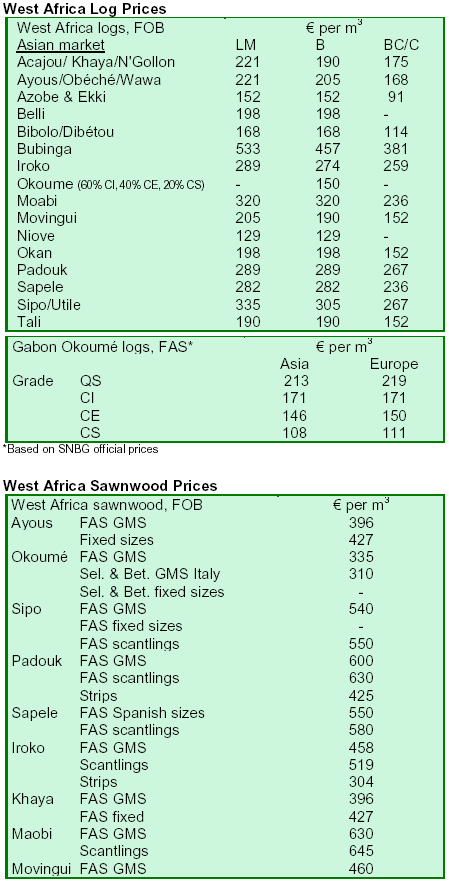
2. GHANA
Ghana¡¯s PURC approves 35% increase in utility tariffs
Barely a few months after Ghana¡¯s 13-month prolonged energy power rationing crisis, which ended
in September 2007, the Public Utility Regulatory Commission (PURC) has approved a 35%
increase in electricity and water tariffs. The approval of the tariff was given in October
2007 and will take effect from 1st November 2007. The Electricity Company of Ghana (ECG) and Ghana Water
Company (GWC) were expecting between a 60% and 100% increase, which was needed to enable
them meet the increasing cost of power generation and to improve service quality.
According to the PURC, its approval of a 35% increase instead of the 60% - 100% was ¡®to protect
the consumer and not burden them with the inefficiencies of ECG¡¯. Ghanaians pay the lowest utility
charges in the West-African sub-region, which makes it difficult to meet the
cost of distributing electricity to consumers. Coupled with the crude oil prices on the world market, which compelled
the government to increase fuel prices by 5% effective 1 November 2007, some market watchers
speculate any increase in the production cost of businesses might have a corresponding rise in the
price of goods.
Meanwhile, the Association of Ghana Industries (AGI) has assured the government of its
preparedness to pay realistic tariffs on power if the PURC will ensure that inefficiencies
by service providers are not passed onto the consumer.The AGI has also asked the government to close the
gap between duties on imported raw materials and finished goods to encourage local manufacturing
activities.
As at the first half of 2007, the ECG was indebted to the Volta River Authority (VRA) to the tune of
GH¡é87,700,000 (or USD93,796,791) due to its inability to pay the country¡¯s power generator for
power bought from it. Meanwhile the government has said it will merge the ECG and the Northern
Electrification Development (NED) as part of its energy sector reform initiatives. The merged
company would also be re-organized into four strategic business units under a holding company.
The four units would be constituted as the Northern, Central, Western and Capital Electric
Companies and would be spun into fully-fledged companies within the ambit of the holding
company.

3.
MALAYSIA
Planted forest project to double timber production in Sarawak
The Star reported on Sarawak¡¯s new planted forest initiative, which aims to double annual
roundwood production to 25 million m3. Thirty-eight licenses for projects have already been issued
by the state government and it is hoped that enough projects will be established in
order to harvest one million hectares of planted forests within thirteen years¡¯ time. The project has focused on
planting Acacia mangium, but indigenous species are of growing interest. There are plans to initiate
applied research on such species within the Sawawak Forestry¡¯s Applied Forest Science and
Industry Development office, especially those on the brink of extinction such as some
species of bamboo.
Bamboo will be planted as part of a project on park land to provide local villagers with raw material
to generate income through a local handicraft enterprise. UNDP¡¯s Global Environment Facility Small
Grants Programme, which is contributing a USD50,000 grant to fund such projects, has noted that
the bamboo park was ¡®set to become a center of excellence for bamboo research and
development¡¯.
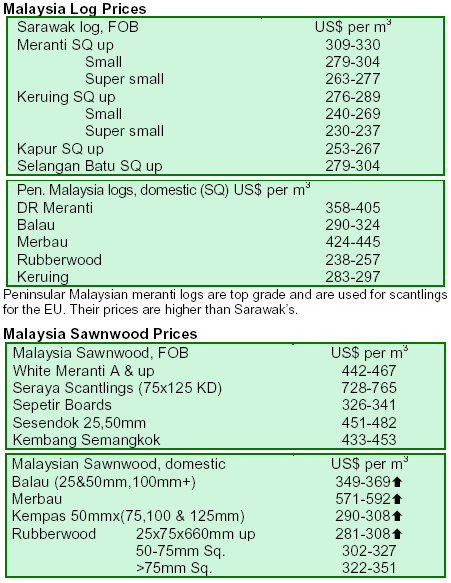
4.
INDONESIA
Indonesian Vice President notes shared responsibility for
forest destruction
Kalla, the Indonesian Vice-President, said that western nations were partly to blame for Indonesia¡¯s
forest destruction. According to The Jakarta Post, he said they must compensate Indonesia for lost
forests, which have been cleared to plant oil palm and contributed to making
Indonesia the world¡¯s third largest emitter of carbon emissions. Nevertheless, Kalla explained that the illegal
felling was also done in cooperation with local entitites and regional governments, calling it ¡®an accident of
history¡¯.
Timber baron cleared of illegal logging charges
An Indonesian industrialist, Mr. Adelin Lis, was recently cleared of illegal logging charges following
an intervention by the Forestry Minister, Mr. Malam Kaban. The Forestry Minister intervened during
the investigation of Lis by presenting a letter claiming that Lis¡¯s activities
were ¡®not a crime but were merely an administrative violation¡¯. The Sydney Morning Herald reported on the
incident, saying that the release of Lis undermines Indonesia¡¯s bid to receive a multi-billion dollar
programme designed to prevent deforestation. The new programme will be discussed at the upcoming United
Nations climate change conference in Bali this December.
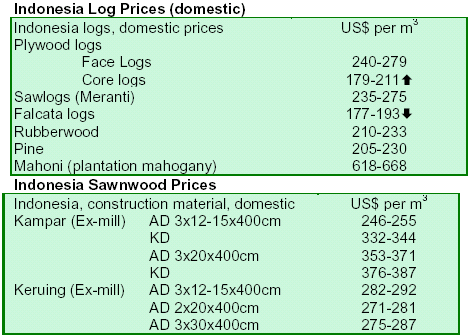
5.
MYANMAR
MTE may feel the heat from the EU¡¯s proposed timber ban
EUWID reported on the possible impacts of the proposed EU timber ban on Myanmar (see TTM
12:20), noting the various responses of timber traders to the proposed measures. In Denmark, the
company Dalhoff Larsen and Hornemann A/S (DLH) said in October that it would
immediately stop buying teak from Myanmar. Other European importers have either enough stocks to meet
demand or intend to purchase teak before the ban comes into force. Nevertheless, there is a concern by
some that the banned timber would still find its way into the European market, possibly through
other countries such as China.
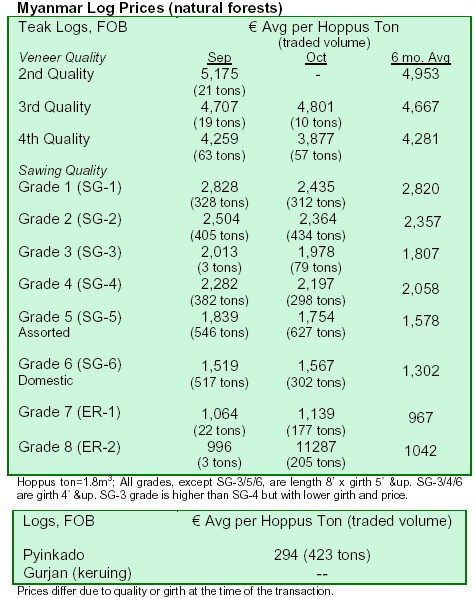
6.
BRAZIL
Timber fair attracts 20,000 visitors
The ¡®7th Machinery, Furniture and Timber Products Fair¡¯ and the ¡®7th International Conference on
Plywood and Tropical Timber¡¯ were held back-to-back under the theme ¡®perspectives on forest
activities in the Amazon¡¯, from 23-27 October 2007 in Bel¨¦m, Par¨¢ state, Northern Brazil.
Discussions were centered on factors affecting the timber sector, such as unfavorable exchange
rates, the growingmarket in China and the lack of clear public policies.
The Fair, organized by the Industry Association of Wood Exporters of Par¨¢ State (AIMEX), the
Brazilian Association for Mechanically-Processed Timber (ABIMCI) and the Par¨¢ State Industry
Federation FIEPA, brought together over 20,000 people. The event was directed to the solid and
tropical timber sector. The event housed more than 150 exhibitors, which showed new
technologies for the production of floorings, decks, doors, windows, panel, plywood, veneer and other products in
80 booths.
During the events, three publications on Amazon forest activities were launched: experiences with
forest management in the National Forest of Tapaj¨®s; the Manual of Reforestation; and Forest
Management in V¨¢rzeas (a seasonally flooded forest). The Tapaj¨®s publication
explains an experience with a forest concession on a public land in Par¨¢ state. The reforestation manual details
reforestation of degraded areas in Northern Brazil. The ¡®Varzeas¡¯ forest management publication
shows examples of traditional forest management, including high and lowimpact
logging in several regions of Amazonas and Par¨¢ state.
BNDES announces timber sector loans
Sindimadeira RS said the Brazilian Economic Development Bank (BNDES) announced it would
provide finance for the timber sector. The Timber Union of Rio Grande do Sul state
(SINDIMADEIRA RS) has told its members of the possibility to register its members in the
BNDES Operations Unit, which would assist them in obtaining finance using similar mechanisms of furniture
manufacturers in Brazil.
This is an alternative to help micro, small and mediumsized companies (MSMEs) access financial
resources of BNDES. The process consists of a pre-approved credit line of up to BRL250,000 by
the financing bank (Bank BRADESCO, the Bank of Brazil and Federal Credit Bank
Caixa Economica Federal) with fixed installments over a period of 36 months with a current interest rate of
1.0% per month. Over 67,000 products are available for purchasing.
The BNDES credit line already allows financing for acquisition of inputs for various sectors, which
includes wood, leather, steel and glass for furniture, chemicals, iron or steel profiles, knobs, locks
for furniture, and other items. In addition, the furniture manufacturers can also
obtain financing for rough lumber, plywood, veneer and wood panels. Companies can be considered for a credit
line if they have an annual revenue of up to BRL60 million, 60% of which should be obtained from national
sources.
Brazil enacts law on export incentive loans
Correio da Para¨ªba said a new law (No. 11,529) ratified by the Brazilian government will grant tax
and credit incentives to different Brazilian sectors of the economy, stimulating Brazil¡¯s
competitiveness in domestic and international markets. These measures would benefit
sectors that face difficulties because of the appreciation of the Brazilian Real against the US dollar. For
instance, in the furniture sector, the new law would allow loans of BRL3 billion to companies that
have a gross operational revenue of up to BRL 300 million. To obtain the BRL 3
billion, BRL2 billion would be obtained from the BNDES and BRL1 billion from a sectoral working capital fund.
The resources would be for current assets, investments and exports, with loans of up to 36 months and
an 18 month grace period. For investments, the loan period would be up to eight years, with a
three-year grace period.
Brazil considers partnership with China
Netcomex reported on the visit of the president of the Brazil-China Chamber of Commerce and
Industry to the Brazilian Association for Mechanically-Processed Timber (ABIMCI), where a profile
of the Chinese timber and forest sectors was presented to 120 Brazilian entrepreneurs. The
president of the Chamber said the visit would help stimulate a partnership with Brazil, as Brazil
could learn from a number of China¡¯s lessons learned in raising the competitiveness of China¡¯s
wood products. Brazilian entrepreneurs in the sector were particularly concerned over the lack of
sectoral policies in Brazil.
According to the International Wood Products Association (IWPA), Brazil exported more than
400,000 m3 of tropical plywood to the US in 2003, compared with 437,000 m3 shipped from China.
From January until June of 2007, China had already exported over 464,000 m3 to North
America, while Brazil reduced its export to the US to 229,000 m3. China suggested that to remain in the
market, Brazil could offer more value-added products and search for new markets.

7.
PERU
President calls for greater utilization of natural
resources
Peru¡¯s President, Alan Garcia, recently criticized those who question Peru¡¯s active natural resource
utilization, and emphasized the need for Peru to continue its utilization of such resources. Herbert
Frey, President of the Lumber Committee of Peru¡¯s Exporters Association (ADEX), stated that
exporters in the sector accepted the President¡¯s challenge to better use natural resources, but
pointed out that it would only be possible with the active participation of the state. He added that
Peruvian exporters are capable of meeting challenges as stated by the President, which would
make it possible for Peru to export USD3 billion per year in the first five years of
implementation, with the possibility of generating USD7 billion by 2017. The participation of the state should help
design solutions using normative and technical methods to control the resources of the Peruvian
Amazon.
Frey proposed that the state must form an autonomous forestry authority at the highest level,
involving professionals of unquestionable reputation, with a Directorate advised by representatives of
state and private sectors. He noted that the authority should not be the National Institute for Natural
Resources (INRENA), but should be a separate body specializing in productive forest
management and should promote reforestation in severely felled to clear zones. At the same time, the
government must strengthen and improve the capabilities of supervision and control of the Office for
the Supervision of Forest Concessions (OSINFOR), allowing it to be an authentic independent and
autonomous entity.
Experts gather to discuss future of Peru¡¯s forestry sector
The Third National Forestry Convention was recently held in Pucallpa City, where participants
discussed several topical issues in the forest sector. The President of the Ucayali Region, Jorge
Velasquez, said it was ironic that the cost of transporting wood products cargo from Callao
Port to Shanghai was less than from the Ucayali region to Callao Port.
The President of ADEX, Jose Silva Martinoti, said that deforestation is caused by Andean peasants
who move to the Peruvian tropics to grow subsistence crops. He said they overuse the land and
then abandon it to look for new, more productive land, which repeats the cycle. This
practice, said Silva, has resulted in the deforestation of approximately eight million hectares and about 300
thousand hectares annually.
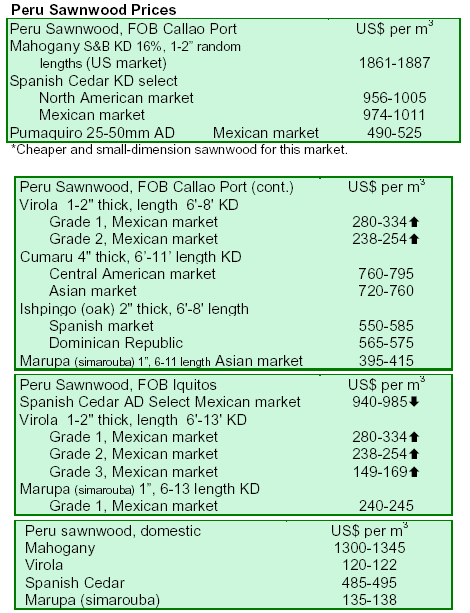
8.
MEXICO
Mexico announces new climate change strategy
According to a news release from the Mexican Embassy in Japan, Mexico will participate in the
adoption of one to several long-term global goals to reduce greenhouse gases.
The strategy will be implemented by addressing carbon emitting activities including on land, in forests and
through cattle raising. As part of the strategy, Mexico will implement the ProTree Programme, which will
help establish 250 million trees, reforest 285 thousand hectares and develop 100 thousand hectares
of commercial forest plantations in 2007 alone.
9.
PANAMA

10.
BOLIVIA
Bolivia¡¯s wood products exports reach US$71 million
at end August
Bolivia¡¯s wood products exports reached USD71 million in the first eight months of 2007, a 14.4%
increase in value compared to the same period in 2006. Last year, sawnwood accounted for 70% of
total growth in wood products exports, while in 2007 the growth was caused by
high value-added products. High value-added products represented 65% of the total value of wood products
exported this year, compared to 58% last year, and represented a 45% rise in volume, compared to 41% in
2006.
Of the USD46 million high value-added products exported, furniture accounted for 38%, doors 24%,
flooring 12%, veneers 9%, fiber boards 8%, and plywood 3%. The US was the destination country
for 43% of these exports and EU countries imported 32%. Regarding sawnwood and other less
value-added products, the US imported 28%, EU 20%, China 16%, Argentina 13% and
the Dominican Republic 8%.

11.
GUYANA
Government workshops promote enforcement of
regulations on wood processing
The Guyana Forestry Commission (GFC) recently hosted a workshop to promote the enforcement
of regulations by stakeholders. This is the second session being held in the
country to help forestry stakeholders to better understand new regulations for processing, which will be put into
effect from January, 2008. Robert Persaud, Minister of Agriculture, said the workshop was part of a greater
initiative to ¡®create a modern and sustainable forestry sector that will meet the requirements set at
the national and international levels¡¯. He noted that Guyana¡¯s forestry activities have a global impact
and there is need to ensure efficiency and effectiveness in accordance with international
requirements. The Minister also indicated that the forestry sector was growing in a national context
in terms of employment opportunities and in local and foreign investment.
The Agriculture Minister pointed out that the new GFC Act, which was passed in the National
Assembly, and the draft forest bill focuses on a renewed role for the Commission to ensure
compliance with necessary regulations and guidelines at all levels. Minister Persaud
is encouraging stakeholders to ensure that they work with the GFC and comply with the regulations. He noted that
the GFC will ensure wrongdoings are addressed and wherever there are breaches, they will be
corrected. This is not aimed at reducing log exports but would create more economic benefits. A
national log export policy will be finalized shortly and there will be greater monitoring of
logging activities.
During the workshop, Commissioner of Forestry, James Singh, delivered a presentation on some of
the issues that would be targeted under the new regulations, including the need for more
mechanization, the use of modern facilities and technology, better consumer loyalty, improved
safety and more processing activities. Concession holders were mandated to prepare a Forest
Management Plan and an Annual Operational Plan, which must be based on a 100
percent inventory of the concession. In addition, they are required to ensure that all their employees are
knowledgeable about GFC guidelines and that these are properly implemented. These include
proper completion and timely submission of documentation (removal, permits, transshipment,
sawmill returns etc) and strict compliance with log-tagging procedures.
Other stakeholder meetings on similar issues have been held to emphasize that timber sector
activities are not solely focused on economic activities. During another stakeholder workshop,
Minister Robert Persaud said that the work of the government through the GFC has helped
focus on social and policy aspects to ¡®ensure there is equitable access to natural resources¡¯. Stakeholders
were allowed to express their views on the regulations, during which they spoke about the future of
chainsaw operations, the need for capital to ensure compliance with some of the
procedures and the government¡¯s input to the process. Stakeholders were advised that the regulations were not
aimed at ceasing chainsaw operations, but would seek to regularize the system.
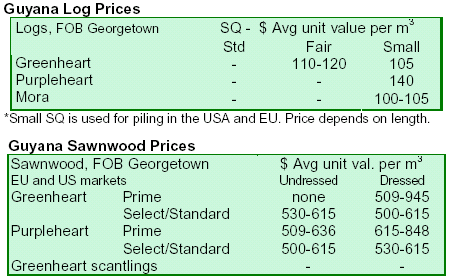
|